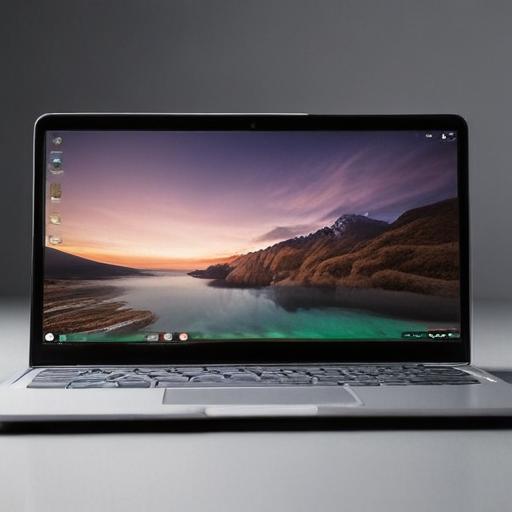Google and Lenovo have partnered to unveil a groundbreaking new device: the Lenovo Chromebook Plus 14, which is the first Chromebook equipped with a neural processing unit (NPU). This innovative addition enables new software features designed to enhance user experiences significantly.
Recently, at a press event in New York City, Google representatives and Lenovo showcased this cutting-edge Chromebook. The device stands out not only for being the first with an NPU but also for being the inaugural Chromebook Plus model built on an Arm architecture, powered by MediaTek’s new Kompanio Ultra 910 system-on-chip (SoC).
Chromebook Plus models are distinct from budget Chromebooks, offering higher-end specifications that ensure a superior user experience. Starting at $649, the Lenovo Chromebook Plus 14 is considered advanced for its category. There is also a more robust model priced at $749, which upgrades the configuration to 16GB of memory, incorporates a touch screen, and includes a fingerprint scanner.
The Lenovo Chromebook Plus 14 features a thoughtfully designed chassis that is both stylish and functional. Created specifically to accommodate the advanced MediaTek chip, the Chromebook is fanless, enabling silence and efficient operation without overheating. Weighing just 2.8 pounds and measuring 0.62 inches thick, it is portable and designed with a premium feel, made from aluminum and textured ABS plastic.
For those who require a vibrant display, the 14-inch OLED screen boasts a resolution of 1,920 by 1,200 pixels. It is bright and delivers stunning visuals, although some reflective glare was noted during the event. The device provides an impressive battery life of up to 17 hours, a notable achievement compared to many midrange Chromebooks.
Additionally, the Chromebook Plus 14 comes bundled with a year of Google’s AI Pro plan, granting access to various AI-driven applications and 2TB of cloud storage—a significant value add for users.
At the heart of this Chromebook is the MediaTek Kompanio Ultra 910 processor, featuring an eight-core CPU and an 11-core GPU, alongside the NPU capable of handling AI tasks more efficiently. This capability allows the Chromebook to execute more complex background tasks locally, enhancing responsiveness and security.
Two unique features derived from the NPU include “Smart Grouping,” which automatically organizes open windows related to specific tasks, and on-device image editing within the gallery app. The image editing feature allows users to perform basic editing tasks, such as background removal, using a touch screen for an intuitive experience.
These advancements signal a shift towards enhanced productivity and creative capabilities in Chromebook devices, with AI flavors enhancing usability. Features like contextual text capture and new tools for inserting AI-generated images set the stage for the continued evolution of ChromeOS.
Overall, the Lenovo Chromebook Plus 14 demonstrates a promising future for Chromebooks, integrating advanced technology with user-friendly features that could transform workflows in various settings. With Google’s strong software infrastructure, the potential for future developments in the Chromebook ecosystem looks bright.
